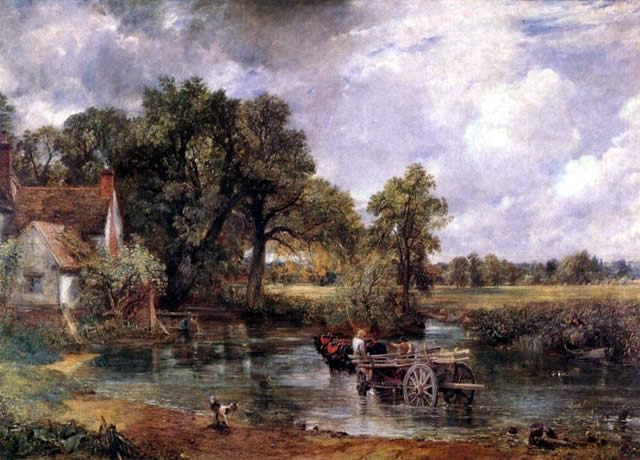
CSSPLAY
Doing it with style

Doing it with style

The Hay Wain is an oil on canvas painting by John Constable. It was finished in 1821 and shows a hay wain near Flatford Mill on the River Stour at Flatford, Suffolk.
Flatford Mill was owned by Constable's father and the house on the left side belonged to a neighbour, Willy Lott (a tenant farmer), who was said to have been born in the house and never to have left it for more than four days in his lifetime. Willy Lott's house has survived to this day practically unaltered, but none of the original trees in the painting exist today. The water level is also higher as that area of East Anglia has sunk into the sea by one foot (30 cm) since Constable's time.
The Hay Wain is revered today as one of the greatest British paintings, but when it was originally exhibited at the Royal Academy in 1821 (under the title Landscape: Noon) it failed to find a buyer. It was considerably better received in France where it was praised by Théodore Géricault. The painting caused a sensation when it was exhibited with other works by Constable at the 1824 Paris Salon (it has been suggested that the inclusion of Constable's paintings in the exhibition were a tribute to Géricault, who died early that year). In that exhibition The Hay Wain was singled out for a gold medal awarded by Charles X of France, a cast of which is incorporated into the picture's frame. The works by Constable in the exhibition inspired a new generation of French painters, including Eugène Delacroix.
The painting was voted the second best painting in Britain in a 2005 poll organised by the Today programme in September 2005. It is currently exhibited at the National Gallery in London.
Source Wikipedia.
This is a very old demo that is kept on site for those starting out with CSS.
Another 'just for fun' demonstration using opacity and a single image.
If your are using Firefox 2.0 then just touch the side of the miniature image, if you are using Opera, IE5.5, IE6, IE7, Netscape or Mozilla then move the mouse to the centre of the miniature to see the effect.
With modern CSS styles this method is no longer useful.
Your donations keep CSS PLAY running.
If your donation is for the use of a demo then please email me with the demo url after making your donation.
